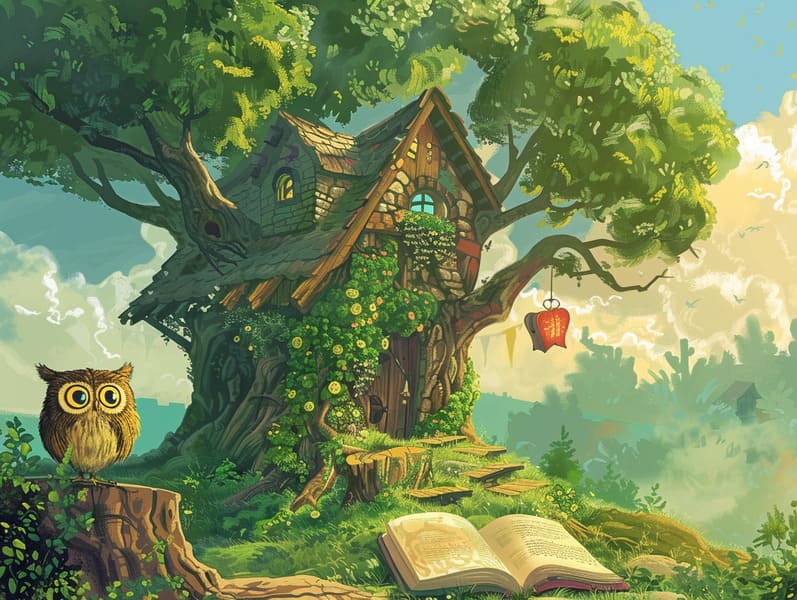
Famous fairy tales have ancient roots. These narratives have been whispered from one generation to the next ages before they were ever recorded. They emerged from a variety of civilizations, including Western traditions. They were initially conveyed among older generations, often carrying themes and messages relevant to the societal norms and beliefs of the time.
The Brothers Grimm, Jacob and Wilhelm Grimm, were among the first to assemble many of these beloved narratives. Their volume, "Grimm's Story Collection," included classics like "Cinder Maid," "The Bread Crumb Trail," and "Little Snow White," which have since become pillars in the world of iconic fairy tales. Similarly, Hans Christian Andersen's charming fairy tales, such as "The Little Mermaid," and "The Duckling's Story," have stolen hearts worldwide, cementing their place in the pantheon of iconic fairy tales.
Though they are centuries old, fairy tales remain as applicable as ever, especially as children's bedtime stories. These delightful tales are now available in various formats, including artistically illustrated books, delightful animations, and web-based fairy tales.
Their lasting appeal can be attributed to several delightful features:
Valuable Lessons: Timeless fairy tales often share important moral lessons. Stories like "The Story of the Boy Who Cried Wolf" teach the significance of honesty, while "The Story of the Tortoise and the Hare" illustrate the merits of determination and humbleness. These tales offer young ones clear distinctions between truth and falsehood, guiding their moral compass in a subtle yet significant way.
Sympathy and Perception: Classic fairy tales frequently depict heroines facing tests and troubles, fostering young listeners to comprehend with their struggles and cheer for their triumphs. For instance, "Beauty's Beast" conveys the significance of appreciating inner worth to comprehend the inner core of a character, nurturing compassion and discernment.
Cultural Recognition: Many fairy tales are interwoven with the cultural contexts from which they were born. Exploring these tales can provide informative snapshots into different heritages, encouraging a sense of cultural insight and appreciation.
Creativity and Fantasy: The enchanted elements in ancient fairy tales—spells and potions—generate children’s fantasies. These tales guide readers to supernatural realms, provoking inventive thinking and a sense of astonishment that continues a lifetime.
Old fairy tales are not only charming but also educational. They work as captivating tools in enhancing various cognitive and emotional skills in little ones. When old fairy tales are spoken out loud, they boost language development by presenting new terms and elaborate sentence structures. This more info practice also enhances listening abilities and mental focus, as little ones hang on every word, eager to see what happens next.
Furthermore, contemplating the themes and characters of traditional fairy tales can sharpen intellectual skills and thinking skills. Children are guided to discover patterns, expect results, and comprehend cause and effect. These conversations also facilitate kids speak out their thoughts and feelings, enhancing their emotional intelligence.
In today’s technological age, the availability of web-based fairy tales has made these tales more within reach than ever. Internet resources and software offer large libraries of children's fairy tales that can be read or listened to anytime, anywhere. Fairy tales voiced are particularly prevalent, providing an entertaining method for young readers to savor these whimsical stories. Sound books and spoken videos take characters and settings to life, often accompanied by enchanting music and instrumentals that augment the tale experience.
The enduring charm of ancient fairy tales lies in their ability to adjust to modern times while maintaining their central messages. Contemporary renditions of these stories often feature more multicultural figures and modern settings, making them relatable to today’s audience. However, the central morals of gallantry, empathy, and justice remain unchanged, continuing to connect with children of all ages.
Fairy tales also offer a sense of warmth and familiarity. They provide a coherent narrative with a plain beginning, middle, and end, often winding up with the finalization of conflicts and the triumph of righteousness over wickedness. This foreseeability can be placating for little ones, affording a sense of sturdiness in an unstable world.
Classic fairy tales continue to spellbind and inform new generations, maintaining their grandeur and impact in modern society. As bedtime stories for kids, they highlight a perfect blend of magic and knowledge, cultivating moral values, empathy, and creativity. The availability of free fairy tales online and the widespread nature of fairy tales narrated ratify that these old fairy tales remain within reach to new generations.
By conserving and passing on these stories, we continue to commemorate the rich tapestry of lore and cultural heritage. Whether you are enjoying a vividly illustrated book, discovering a electronic library, or playing an read-aloud book, the elegance of children's fairy tales is always within reach. These narratives reveal of the invariable force of narratives and its ability to tie us across centuries and lands.
Regardless if you are browsing a beautifully illustrated book, seeing a virtual collection, or listening via an voice book, the enchantment of old fairy tales is always within reach.
These stories highlight of the continued ability of narratives and its ability to gather us across epochs and places, creating a bond that delights and instructs alike.
Comments on “Tracing the Heritage of Mythical Fairy Tales and Its Unfading Enchantment.”